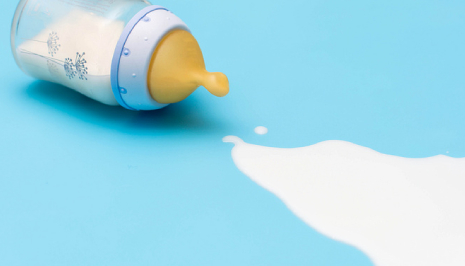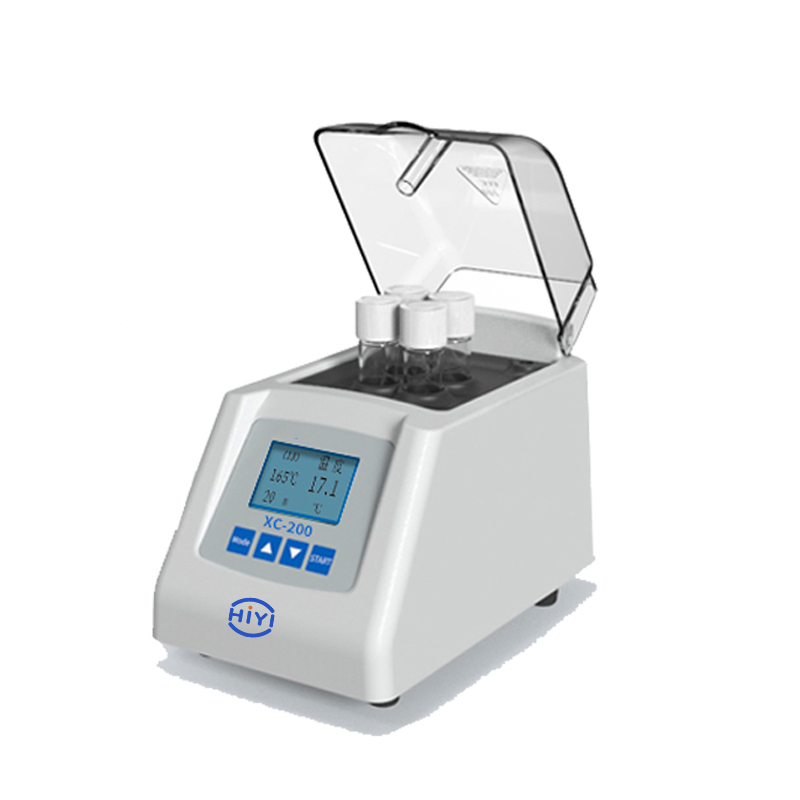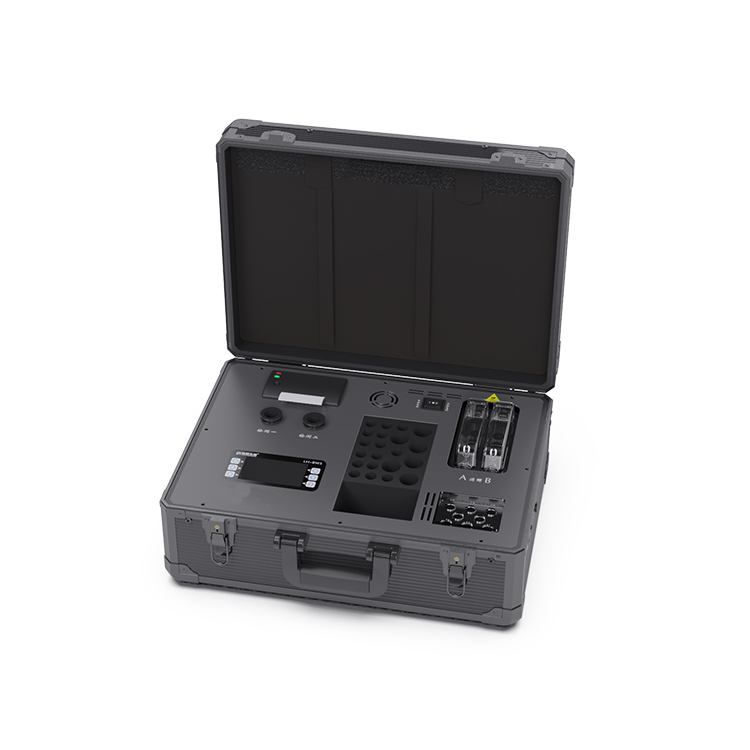After dairy cows suffer from mastitis, the secretory cells of the udder are damaged or destroyed, which causes its secretory dysfunction; in addition, due to the occurrence of udder inflammation, the expansion of mammary blood vessels and the change of osmotic pressure, the white blood cells, NaHCO 3 and The protein etc. ooze out and enter the acinus, causing the following changes in milk composition: The content of whey protein increases, the content of casein decreases, and the output of cheese decreases significantly; the content of lactose, milk fat and non-fat milk solids all decrease to varying degrees. Increased immunoglobulin ; decreased acidity and specific gravity, increased pH and conductivity. P, Ca, and K are slightly reduced, and the content of Cl and Na is significantly reduced. Lipoxygenase , hydrogen peroxide enzyme levels were increased; base reaction enhanced thermal stability decreases, shortening the shelf life of dairy products and the like.
Affect food hygiene and safety
Because mastitis milk contains a large number of somatic cells and antibiotics, the fresh milk is contaminated to a certain extent, which affects the quality and flavor of dairy products. As a result of the inflammatory reaction in the breast, the blood protein flowing to the breast system increases (mainly some low-quality whey protein ). Milk contains more free fatty acids that make the milk sour , which inhibits the use of fermented dairy products. The cultivation of lactic acid bacteria. A decrease in milk protein content and an increase in pH will result in a loss of cheese production. In addition, harmful bacteria in mastitis milk such as Mycobacterium tuberculosis , Brucella , Staphylococcus aureus and Streptococcus pyogenes can cause mastitis and disease. Tuberculosis and Brucella can cause human tuberculosis and brucellosis ; Staphylococcus aureus can produce toxins, which can cause fever, vomiting, diarrhea and dehydration, and cause food poisoning ; Streptococcus pyogenes is milked Workers contaminate milk, causing people to suffer from tonsillitis , scarlet fever or suppurative pharyngitis. Antibiotic therapy is commonly used for the treatment of cows with mastitis. Due to the large-dose and long-term use of various antibiotics, there are residual antibiotics in the milk. When people consume milk containing antibiotics, it can cause allergic reactions such as skin rashes and discomfort. In severe cases, anaphylactic shock can occur . More people drink mastitis milk with antibiotic residues for a long time, causing bacteria in the body to develop drug resistance, which brings greater difficulties to the treatment of diseases.
Mastitis milk detection
The main detection methods of mastitis milk are: somatic cell counting method, alcohol test, enzyme detection method, conductivity test method and direct detection method of milk components.
Somatic cell count
The number of somatic cells in milk is an important indicator of the health of milk and the herd. In recent years, most countries have adopted the somatic cell count (Somatic Cell Count SCC) of milk as one of the milk purchasing standards. The international somatic cell count has also been used as a criterion for determining recessive mastitis in dairy cows. It is generally considered that the somatic cell count is less than 400,000/mL milk is qualified milk. The number of somatic cells in normal milk is generally between 200,000 and 300,000/mL, and the quality of milk will be reduced if it exceeds this range. When a cow suffers from mastitis, the milk contains a large number of somatic cells, generally exceeding 500,000/mL. The higher the number of somatic cells, the worse the health of the breast. The number of somatic cells is directly related to the quality and yield of milk.
1 California Somatic Cell Test
The basic principle of California Mastitis Test (CMT) is to use anionic surfactants-alkyl or hydrocarbyl sulfates to destroy somatic cells in milk and produce nucleic acids, which are combined with reagents to produce precipitation or gel. The method of operation is to add 2 mL of the milk sample to be tested in the diagnostic tray (a milky white plate with a depth of 1.5 cm and a diameter of 5 cm), and then add 2 mL of the CMT diagnostic fluid. Place the diagnostic tray flat and rotate it in a concentric circle to make the milk and diagnostic fluid sufficient After mixing, observe the state of the mixture after 10-30s. Observe the state of the mixture and compare it with the standard comparison table to determine the grade of the mixture (N, T, 1, 2, 3). The corresponding number of somatic cells is: N level 0-200,000/mL, T level 200,000-400,000/mL, level 1 400-1.2 million/mL, level 2 1.2-5 million/mL, level 3 above 5 million/mL . If the body cells are constantly high, it indicates that the cow has infectious mastitis, which may be caused by Staphylococcus, Streptococcus or E. coli.
When using CMT method and imitation CMT method to determine SCC, it has the advantages of fast, sensitive, low price, less equipment required for experiment, and more accurate experimental results. However, the detection result is only the relative number of somatic cells and requires professional operation. Sometimes There will be false positive results . In addition, because the toxins produced by bacteria can destroy somatic cells and other reasons, mastitis-positive milk will be negative. 2 Electronic counter detection method
Most dairy farms in the United States use electronic counters to perform automated somatic cell detection over several months. For example, dairy farms in Wisconsin use computers to perform SCC analysis on individual dairy cows. 77.6% of the 145 Wisconsin dairy herds were healthy cows (SCCmL before dry milk = the first SCC test after delivery. If SCC>200,000/mL, it means that the cow was infected during dry milk. The advantage of the electronic counting method is that it can The number of somatic cells can be measured quickly and accurately, which is more accurate and objective. Generally, the milk somatic cell analyzer of Danish Foss is used for the detection, but the equipment is expensive and needs to be calibrated frequently. At the same time, the milk sample is measured in a centralized manner, which is not as simple and fast as the CMT method.
3 other detection methods
In addition to the above two detection methods, other methods of somatic cell determination include the use of Ferrit's method, Wisconsin mastitis test method, direct microscopy, direct microscopy, linear score (LinearScore) and other methods.
It should be noted that when comparing the number of somatic cells measured in each test with the standard somatic cell grading standard, milk that exceeds a certain value can be considered as mastitis milk, but milk with a lower number of somatic cells should also be noted.
Alcohol test
The principle of the test is to use the dehydration effect of alcohol on protein. A certain amount of normal milk is stable to a certain concentration of neutral alcohol, otherwise the milk protein will agglomerate and agglomerate due to the dehydration effect of alcohol. The alcohol test can not only detect milk with acidity exceeding 16-18T, but also mastitis milk, unbalanced salt milk and milk mixed with calcium chloride. The acidity of raw milk suffering from mastitis and other diseases will increase significantly. In production, raw milk with high acidity has poor thermal stability, and the protein in the milk tends to coagulate when heated and form flocculent precipitation, which affects the quality of dairy products. Therefore, determining the lactic acid degree of raw materials is one of the important indicators for testing the quality of raw milk.
Alcohol test method: Mix the same amount of ethanol with milk in a test tube. Milk without flakes after shaking meets the acidity standard, and milk with flakes is positive for the alcohol test, which means its acidity is relatively high. According to the milk collection standards, tests were performed with 68%, 70%, and 72% alcohol respectively. If no flakes appear, the corresponding acidity is 20T, 19T, and 18T, respectively.
In order to ensure the accuracy of detection, special attention should be paid to the following issues in operation: ①The reaction temperature of milk and alcohol is 20℃ as the standard, and different temperatures need to be corrected. If the temperature is too high or too low, normal milk will also produce an alcohol-positive reaction. ②The reaction time should be 5 seconds. If the reaction time is too long, protein precipitation will occur , causing the results to be inconsistent with the facts. ③Alcohol for testing needs to maintain the accuracy of its concentration and pH value. Generally, the alcohol should be used and prepared immediately, and the dosage should not be too large at a time, and it should be sealed and stored for later use.
Conductivity test method
When a cow suffers from mastitis, the conductivity of the milk produced increases, and this property can be used to detect mastitis milk. Professor Qingming Hao of Shanxi Agricultural University developed a diagnostic instrument for bovine mastitis . This instrument can distinguish between healthy milk, suspicious milk, mildly infected milk with latent mastitis, moderate milk, and heavy milk. In addition, it can also preliminarily determine the nutrients in the milk. In addition to the above-mentioned milk, healthy milk can also be divided into best healthy milk, general healthy milk and sub-healthy milk. The breast tester developed by Northwest A&F University is a portable breast tester with extremely conductive sensors. It is small in size and can quickly and comprehensively detect adulterated milk, rancid milk and mastitis milk. When the conductivity of milk varies widely, other factors (such as feeding conditions, different lactation periods, seasons and parities) that cause changes in the conductivity value should be further studied to develop diagnostic criteria under different conditions. Reduce the rate of misdiagnosis.
Enzyme detection method
In the past ten years, with the further in-depth research on recessive mastitis, many enzymes have been found to play a very important role in the pathological process of recessive mastitis and have important diagnostic significance. After analyzing and researching more than twenty kinds of enzymes and biochemical substances, it is found that there is a certain internal connection between enzyme activity and recessive mastitis. The study found that lactate dehydrogenase (LDH), alkaline phosphatase (ALP), acid phosphatase (ACP), glutamate oxaloacetate transaminase (GOT), glutamate pyruvate transaminase (GPT) and serum albumin ( SA) has a strong positive correlation with the number of breast cells, especially LDH has the strongest correlation (r=0.858). Mammary glands and milk contain 5 kinds of lactate dehydrogenase isoenzymes : LDH 1 , LDH 2 , LDH 3 , LDH 4 , LDH 5 . The activity of LDH 1 is very high in normal breast tissue and milk, while the activity of LDH 3 is very low. In cows with mastitis, the activity of LDH 5 in the mammary gland and its secreted milk increases, and the activity of LDH 1 decreases. Therefore, it is believed that when suffering from mastitis, the LDH 1 in the milk decreases, and the activities of LDH 2 , LDH 3 , LDH 4 , and LDH 5 increase. These enzymes can be used as an auxiliary diagnostic index for bovine mastitis. N- acetyl in milk -β-D- glucosamine neuraminidase (NAGase from Crustaceous) from the white blood cells and breast tissue. In normal milk, NAGase released by white blood cells only accounts for 10%-20%, and NAGase from breast tissue accounts for the majority. When dairy cows suffer from mastitis, NAGase is released due to the destruction of mammary gland tissue by pathogenic bacteria. In addition, when cows suffer from inflammation, the NAGase released by white blood cells is also increased, and the activity of NAGase in milk is significantly increased. Therefore, mastitis milk can be detected by examining NAGase in milk. Enzyme detection method is a new detection method in recent years. This method can determine whether the milk produced by cows is mastitis milk, and the method is accurate and reliable. However, the enzyme detection method requires special detection equipment, and the cost of the equipment is high.
Milk component direct detection method
Foreign countries often comprehensively evaluate the quality of milk and the health of the cow based on milk components such as fat, protein, lactose, citrate, and somatic cell count. Changes in milk composition are closely related to the severity of mastitis. Comprehensive analysis of these indicators can not only improve the ability to predict recessive mastitis, but also predict the degree of disease in dairy cows. However, these indicators will be affected by feed, lactation stage, and season, and should be considered comprehensively.













